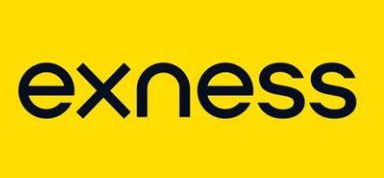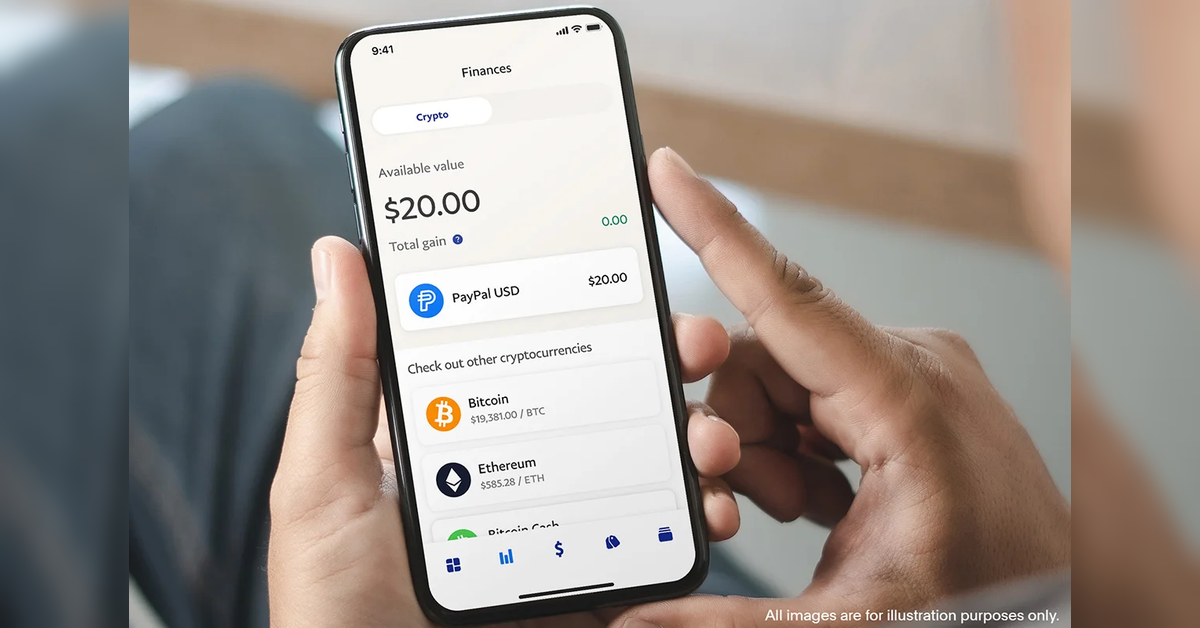When first looking at the world of forex trading, everything might seem overwhelming. So many unfamiliar names, each representing a different currency from a different country and a totally different economy. But, after some time, with some guidance, you can simplify things and start mapping out this super-powerful market. This will help you find the Best Currency Pairs to Trade In Forex Trading.
Key Takeaways: Forex Trading
- Currency Pairs: Forex trading involves pairs like EUR/USD and USD/JPY; major pairs are liquid and beginner-friendly.
- Influencing Factors: Liquidity, trading volume, economic indicators, and political events affect currency pair performance.
- USD Dominance: The USD is central to forex, backed by a strong U.S. economy and used for global commodities like gold and oil.
- Strategies: Use technical analysis for short-term trades, fundamental analysis for long-term decisions, and trade during overlapping market hours.
- Risk Management: Use stop-loss orders, diversify your trades, and never risk more than you can afford to lose.
Before you start, you must understand all the ins and outs of at least a few currency pairs. Thanks to the fact that each currency behaves differently and represents a different country. Traders can engage in currency transactions in the forex market 24 hours daily. This constant activity allows you to trade at times that suit your schedule, even when other markets are not open for trading.
This is why we are writing this article to help you understand everything you need to know about all the most valuable currency pairs.
| Currency Pair | Nicknames | Characteristics | Best For |
|---|---|---|---|
| EUR/USD | Fiber | High liquidity, low spreads, heavily influenced by U.S. and Eurozone economic data | Beginners and experienced traders seeking stability |
| USD/JPY | Ninja | Volatile movements influenced by global risk sentiment and U.S./Japan interest rates | Traders seeking short-term opportunities |
| GBP/USD | Cable | Volatile, sensitive to U.K. and U.S. economic and political events | Traders who thrive on market volatility |
| AUD/USD | Aussie | Commodity-driven (gold), influenced by Chinese economic data | Commodity-focused traders |
When starting to trade, one of the most important decisions you must make is choosing the best currency pairs for forex trading. Not all currency pairs behave the same way. Some are more stable, like the EUR USD or GBP USD.
Others, like the USD ZAR or other exotic currency pairs, can be more volatile which swings up and down more frequently.
Your job is to find the right currency for you as a trader, one that balances opportunity and risk.
This article will help you understand the details of major and minor currency pairs. It will also shed light on factors influencing their range and trading volume. Trading volume means how much money is being bought or sold with a specific currency. It can help you understand when others are trading.
The best part is that you don’t need to be an expert. Start slowly, and soon, you’ll understand how currency pairs work and how to trade them.
Understanding Forex Trading and Currency Pairs
Forex trading, or foreign exchange trading, is all about buying one currency while selling another simultaneously. It might sound complicated, but it’s actually a simple concept once you break it down.
You can split each currency pair into two parts. The first part is the base currency. The second part is the quote currency, which is the exchanged currency.
For example, the pair EUR USD represents the USD as the base currency and EUR as the exchanged currency.
You will always set the base currency to 1
So if the EUR USD is trading currently at a price – 1.12
That will mean that 1 EUR (Base Currency) = 1.12 USD (Exchanged currency).
The forex market is the biggest market in the world, as far as money, with more than $6 trillion traded daily. That’s huge money moving around, creating many opportunities for traders every minute of the day.
Major Currency Pairs in Forex
Major currency pairs are the heavy hitters in forex trading, and for good reason. These pairs are the most traded in the market, so they’re always in motion.
What’s common among them? Almost all of them include the United States dollar (USD). The only Major Pair that does not include the US Dollar is the GBP EUR, which is the British Pound Against the Euro.
There are seven major pairs that traders focus on: EUR/USD, USD/JPY, GBP/USD, AUD/USD, USD/CHF, NZD/USD, and USD/CAD. Because these pairs are so popular, they’re very liquid. In simple terms, liquidity means a lot of people trade them, and you can trade large amounts of them.
This high liquidity makes them a favorite for traders. Also, it usually means that your broker will charge a tighter spread, which can save you money in the long run.
One reason traders find these major currency pairs easier to trade is that global economic news affects them.
For example, if the Federal Reserve makes a big announcement, the USD will react. Different traders will try to benefit from this. The more “Popular” a currency is, the more attention it will get. As a result, more people will trade that currency.
The USD: King of Currencies
The United States dollar (USD) is the undisputed heavyweight champion of the forex market. It’s involved in all major currency pairs and is the world’s primary reserve currency. This means central banks and governments around the globe hold large amounts of USD to support their own currencies and economies.
The USD is strong because the U.S. economy is big and powerful. It is one of the largest and most important economies in the world. Many global commodities, like gold and oil, have a price in USD. This adds to its importance, as countries need dollars to buy these resources, keeping the demand for USD high.
In short, the USD is very important when you trade in forex. Knowing its role can help you make better trades.
EUR/USD: The Most Traded Currency Pair
The EUR/USD pair is the top player in the forex market, and for good reason. It represents two of the world’s largest and most influential economies: the United States and the Eurozone. Because of this, it’s the most traded currency pair in the world.
EUR/USD is popular with traders because it has high liquidity. This means buying and selling without changing the price too much is easy. Also, the spreads, or the difference between buying and selling prices, are often low, appealing to traders who want to keep costs down.
To trade this pair well, many traders closely watch economic indicators from the U.S. and Europe. Employment data, interest rates, and political events can significantly affect the price of EUR/USD. This pair often reacts quickly to the news.
Factors Influencing the Best Currency Pairs to Trade
Choosing the best pair to trade isn’t just about randomly picking any two currencies. Several factors come into play, and understanding these can give you a clearer picture of what drives the forex market. You can improve your trading decisions by examining liquidity, trading volume, and how a pair responds to economic events.
Liquidity and Trading Volume
Liquidity is a critical factor in determining the best pair to trade. It refers to how easily a currency can be bought or sold without significantly impacting its price. The more liquid a currency pair is, the easier it is to enter and exit trades without losing money to slippage. Highly liquid pairs, like EUR/USD and USD/CAD, tend to have tighter spreads, which can lower your trading costs.
Trading volume refers to the number of times a currency pair is bought or sold within a certain time frame. Pairs with high trading volume, such as USD, are the most traded currency pairs in forex. They often show smoother price movements, making them easier to trade without big swings.
Economic Indicators and Central Bank Policies
Economic indicators, such as GDP growth, unemployment rates, and inflation, play a massive role in the forex market. These numbers help traders see how a country's economy is doing. This performance affects the value of its currency.
For example, traders may expect the USD to strengthen when economic reports show that the U.S. economy is growing. The EUR is the most traded currency in forex. Economic news from the U.S. and the Eurozone matters for anyone trading pairs with USD and EUR.
Central banks, like the Federal Reserve in the United States, also have a massive influence. If the Fed decides to raise interest rates, it can increase the value of the USD, affecting many currency pairs like USD/CAD. Traders closely monitor these decisions, as they can directly impact the exchange rate between currencies.
Political Stability and Economic Health
A country’s political and economic stability can significantly affect its currency’s value. Stable countries with strong economies, like the U.S., tend to have stronger currencies, making them attractive pairs to trade. Countries with political issues or economic problems may see their currencies weaken. This makes trading them riskier.
Watching global events, such as elections or trade deals, can help traders predict changes in the forex market. When political tensions rise, sharp changes in the value of some currencies are not uncommon. Understanding these factors is crucial for making well-informed decisions when trading forex pairs.
To choose the best currency pairs, focus on these key aspects:
- Liquidity
- Trading volume
- Economic indicators
- Political events
These factors will help you make informed decisions. These pairs should match your trading strategy and risk tolerance.
Popular Currency Pairs Beyond the Majors
The major currency pairs are the most traded in the world. However, other pairs also provide unique chances for traders.
These include currency pairs involving the Canadian dollar (CAD), the Australian dollar (AUD), and even some exotic currencies. Specific factors, like commodity prices, can sometimes influence these pairs, creating interesting trading setups.
USD/CAD: The Commodity Currency Pair
One of the most popular pairs beyond the majors is USD CAD, often called a commodity currency pair. The close ties between the Canadian economy and its exports, especially commodities like oil, explain this. The Canadian dollar (CAD) often gets stronger when oil prices rise. This makes USD/CAD an interesting pair to trade for those who follow commodity markets.
Traders often look at oil price trends to predict movements in USD/CAD. If oil prices rise, it’s common to see the CAD gain value against the USD. Conversely, when oil prices drop, the CAD can weaken, providing opportunities to sell this pair.
AUD/USD and the Australian Dollar’s Role
Another popular pair to trade is AUD USD. Like Canada, Australia’s economy relies heavily on commodities, particularly gold. This makes AUD/USD an exciting pair for traders who follow gold prices. The Australian dollar often strengthens when gold prices rise, creating potential buy opportunities for traders.
However, not just gold influences the Australian dollar (AUD). China is Australia’s biggest trading partner. When China’s economy does well, Australia’s economy often improves too.
This can lead to price movements in AUD/USD, making it a dynamic pair for traders to watch.
Understanding how these commodity-based currencies move can give you an edge when trading beyond the significant currency pairs. You can find good trading opportunities with USD/CAD and AUD/USD. To do this, watch trends in oil, gold, and economic news from major countries like China.
Exotic Currency Pairs and Their Place in Forex Trading
Exotic currency pairs bring a different kind of opportunity to the forex market. These pairs involve currencies from emerging or smaller economies, like the South African Rand (ZAR) or the Thai Baht (THB).
While they are not traded as much as major or minor pairs, they can provide unique opportunities. Traders looking for bigger price changes may find them valuable.
One of the main attractions of exotic currency pairs is the potential for high returns. Because these currencies are less stable and more sensitive to local economic conditions, their value can fluctuate more dramatically.
For example, political events or changes in a country’s economy can cause sharp movements in the exchange rate. These price changes can create opportunities for quick profits, but they also mean a higher risk level.
The downside is that exotic pairs tend to have lower liquidity, making them more expensive to trade. This means buying or selling large amounts may be more challenging without affecting the price. Spreads are also more comprehensive, which can increase trading costs.
For this reason, traders should approach exotic currency pairs cautiously, ensuring they fully understand the risks involved.
If you’re looking to explore exotic pairs, you need a strong risk management strategy.
These pairs can be tempting because they may offer big gains. However, it is important to balance this with the risk of sudden losses from price changes. By staying informed and prepared, traders can take advantage of exotic pairs’ opportunities while managing the risks.
Strategies for Selecting the Best Currency Pairs
Choosing the best pair to trade in the forex market requires a well-thought-out approach. Your strategies should match your trading style, risk tolerance, and financial objectives. There isn’t one-size-fits-all regarding trading forex pairs, but understanding the key factors can help you make better decisions.
Understanding the market dynamics of each currency pair is crucial.
Analyzing Market Hours
The forex market is open 24 hours a day, but certain times offer better opportunities than others. When two major markets, such as the U.S. and Europe, overlap in their trading hours, the price changes tend to increase. This is when prices change more, giving chances for short-term traders to profit from quick shifts in the exchange rate.
However, the more a certain asset moves, the higher the risk, as prices can suddenly swing. If you’re a short-term trader who thrives on fast movements, trading during these overlapping hours can be beneficial. But if you prefer a more stable market, you may want to avoid these times and trade when the market is quieter.
Technical vs. Fundamental Analysis
When it comes to selecting the best currency pairs, you’ll need to decide between two key approaches: technical analysis and fundamental analysis.
- Technical analysis focuses on price charts, patterns, and indicators to predict future price movements. Traders using this approach look for trends and signals to help them decide when to buy or sell a pair to trade.
- Fundamental analysis, on the other hand, is based on economic news, interest rates, and reports that impact a currency’s value. For instance, if the Federal Reserve announces a rate change, it can significantly affect the USD CAD exchange rate.
| Aspect | Technical Analysis | Fundamental Analysis |
|---|---|---|
| Focus | Price charts, patterns, and indicators | Economic news, interest rates, and reports |
| Timeframe | Short-term to medium-term | Long-term |
| Tools Used | Charts, trend lines, indicators (e.g., RSI, MACD) | Economic calendars, news releases, reports |
| Objective | Predict future price movements based on past data | Assess currency value based on economic factors |
| Market Sentiment | Analyzes market psychology and trader behavior | Evaluates economic health and geopolitical events |
| Approach | Quantitative, data-driven | Qualitative, news-driven |
| Best for | Day traders and short-term traders | Long-term investors and position traders |
| Limitations | May not account for sudden news events | Can be slow to react to market changes |
Many successful traders use both methods. They mix the predictive power of charts with the real-world effects of economic events.
Risk Management in Currency Pair Trading
Risk management is one of the most important aspects of forex trading. Things can go wrong no matter how good a traded currency pair looks. That’s why having a plan in place is crucial to protect yourself from large losses.
Using stop-loss orders is a great way to limit your losses. A stop-loss automatically closes your trade if the market moves against you.
This helps keep your losses at a level you can handle. Diversifying your portfolio is also recommended. Trading different currency pairs can help reduce the risk of being too exposed to one pair.
Lastly, never trade more than you can afford to lose. The market can be surprising even if you think you’ve found the best currency pair to trade. You can trade with confidence and minimize potential losses by managing your risk properly.
Conclusion: Tailoring Your Forex Trading to Market Dynamics
In conclusion, the best currency pair to trade in forex is not always the same. It changes with market conditions, economic trends, and your personal trading style. Whether focusing on major, minor, or exotic traded currency pairs, success comes from staying informed and flexible.
Economic indicators, market hours, and political events can affect your choices. It’s essential to change your strategies based on these factors.
Most importantly, always manage your risk carefully. Even the best strategy or the most promising currency in the world won’t protect you from losses if you’re unprepared. Stay adaptable, use sound risk management, and continue learning as you navigate the forex market.
Wondering which broker would be best for your needs? Explore trusted options and find expert recommendations.
FAQs
EUR/USD (Euro/US Dollar)
USD/JPY (US Dollar/Japanese Yen)
GBP/USD (British Pound/US Dollar)
USD/CHF (US Dollar/Swiss Franc)
These pairs are highly liquid, stable, and widely traded due to their association with major global economies.
Minor pairs do not include the USD but involve other major currencies like EUR, GBP, or JPY.
Exotic pairs feature currencies from smaller or emerging economies, which are less liquid and more volatile.
Fundamental Analysis Tools: Economic calendars, news reports, and central bank statements for macroeconomic insights.
Stay updated on economic news and events influencing the pair.
Assess your risk tolerance and trading style.
Research the pair’s liquidity, volatility, and spreads.




















